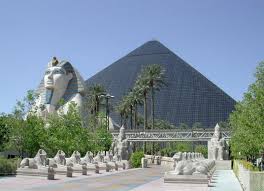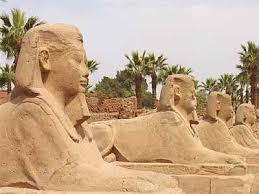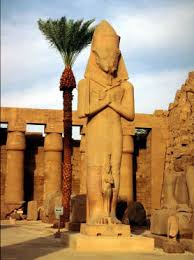Luxor (in Arabic: الأقصر al-Uqṣur) is a city in Upper (southern) Egypt and the capital of Luxor Governorate. Its population numbers 376,022 (1999 survey), and its area is about 416 km². As the site of the ancient Egyptian city of Thebes, Luxor has frequently been characterised as the "world's greatest open air museum", the ruins of the temple complexes at Karnak and Luxor standing within the modern city. Immediately opposite, across the Nile River, lie the monuments, temples and tombs on the West Bank Necropolis, which include the Valley of the Kings and Valley of the Queens. Thousands of international tourists arrive each year to visit these monuments, and their presence represents a large part of the economic basis for the modern city. As a result, Luxor represents an excellent base for touring Upper Egypt, and is a popular holiday destination, both in its own right and as a starting or finishing point for Nile cruises.
1- History
History of Luxor: Luxor was the ancient city of Thebes, the great capital of Egypt during the New Kingdom, and the glorious city of the God Amon Ra. The city was regarded in the Ancient Egyptian texts as T-APT (meaning “the shrine”) and then, in a later period, the Greeks called it tea pie, which the Arabs later pronounced as Thebes. The importance of the city started as early as the 11th Dynasty by King Mento-hotep The city of Thebes was the capital of the fourth Nome of Upper Egypt. The main local god was the God Amon Ra, who was worshipped with his wife, the Goddess Mutt, and their son, the God Khonsou, the God of the moon. Thebes was also known as “the city of the 100 gates”, sometimes being called the southern city, to distinguish it from Memphis, the early capital of the Old Kingdom. Thebes also played a great role in expelling the invading forces of the Hykos from Upper Egypt. From the time of the 18th Dynasty, through to the 20th Dynasty, the importance of the city had risen as the major political, religious and military capital of Ancient Egypt. Such importance faded during the Late Period, but the God Amon Ra http://www.hamdey.php0h.com/
2- Transportation
Luxor is served by an international airport, Luxor International Airport.
A bridge was opened in 1998, a few kilometres upstream of the main town of Luxor, allowing ready land access from the East Bank to the West Bank.
Traditionally, however, river crossings have been the domain of several ferry services. The so-called 'local ferry' (also known as the 'National Ferry') continues to operate from a landing opposite the Temple of Luxor. The single fare (June 2008) is 1 L.E. - one Egyptian Pound - per passenger for foreigners. This ferry is mainly used by the locals although a number of foreigners do use it. The sites on the West Bank are further than you think and you will need transport--taxi drivers often approach ferry passengers, and it is recommended that a fare be negotiated ahead of time. There are also local cars that reach some of the monuments for 25 piasters, although tourists rarely use them. Alternatively, motorboats line the East Bank of the Nile all day providing a quicker, but more expensive (5 L.E.), crossing to the other side.
The city of Luxor on the East Bank has several bus routes used mainly by locals. Tourists often rely on horse carriages, called "calèches," for transport or tours around the city. Do not ask calèche drivers to go to the west bank, because it is too far for the horses, not to mention illegal. Taxis are plentiful, and reasonably priced, and since the government has decreed that taxis older than 20 years will not be relicensed, there are many modern air-conditioned cabs. Recently, new roads have been built in the city to cope with the growth in traffic.
For domestic travel along the route of the Nile, a rail service operates several times a day. A morning train and sleeping train can be taken from the station situated around 400 metres from Luxor Temple. The line runs between several major destinations, including Cairo to the north and Aswan to the south.
3- Gallery





.jpg)


